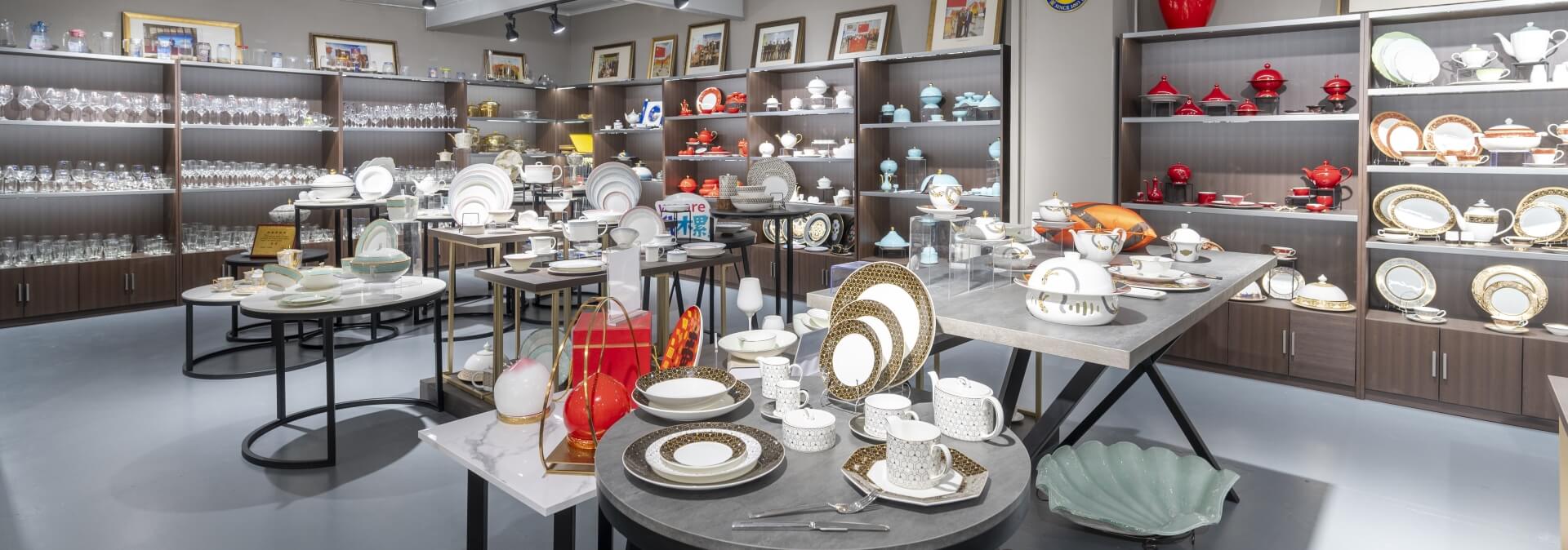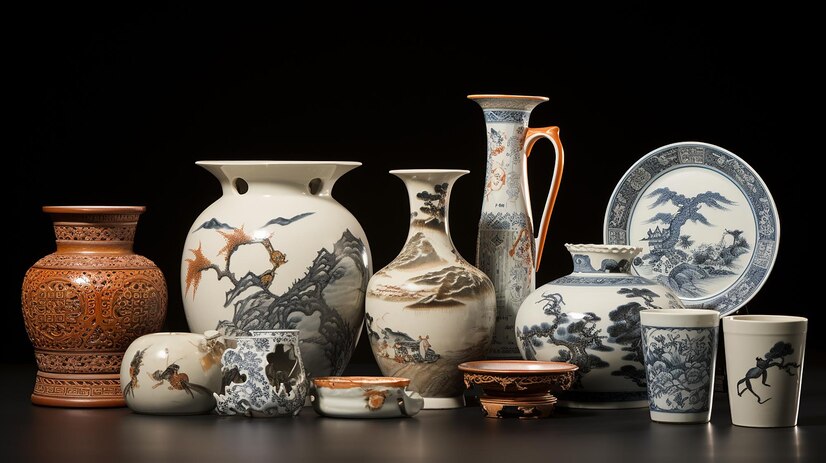
PITO Article
What is the Difference Between Bone China and Porcelain? What Makes Them Unique?
What is the Difference Between Bone China and Porcelain?
When it comes to fine dining or enjoying an elegant tea party, you’ll often encounter two types of high-quality ceramics: bone china and porcelain. Both are tender and useful but there are hundreds of differences between them. Regardless that you are arranging a tea party or looking for dinnerware, it is important to distinguish between what is bone china and porcelain. In this article, we will aim at bringing into focus each of them and make it easier for you to understand what is the difference between bone china and porcelain?
Bone China vs. Porcelain: A Quick Overview
Ceramic bodies used in making bone china and porcelain are not the same since they are both types of ceramics but they are produced differently. Porcelain, on the other hand, has been a much older material although bone china as we know it today was not invented till the 18th century. Here’s a brief look at what distinguishes the two:
• Bone China: Bone china is created from a combination of clay, bone ash, and a number of other ingredients, but it cannot include any calcium phosphate. It is unbreakable, has a translucent quality, and feels light and smooth to the touch.
• Porcelain: Porcelain is made up of mostly kaolin which is a type of clay, quartz as well as feldspar. It is difficult and dense to the bone china, slightly heavier in weight.
Material Composition: What are they Made Of?
The only difference that is in the composition of bones china and porcelain is that the former includes bone ash. Now let’s take a look at what makes these materials so unique.
Bone China
Bone china gets its name from one of its key ingredients: bone ash. This ash is produced by the process of incinerating animal bones, particularly from cattle until they turn to fine white powder. The bone ash content is what makes bone china white, thin, and light, and with a certain ability to glow through the material. A good quality bone china will have around 40% bone ash consistently. When it comes to fine dining or enjoying an elegant tea party, you’ll often encounter two types of high-quality ceramics: bone china and porcelain. Both are beloved for their delicate beauty and practicality, yet they differ in many key ways.
Porcelain
Porcelain on the other hand contains the addition of bone ash Porcelain does not contain bone ash. The one described here is produced with kaolin, which is a type of clay mixed with quartz and feldspar. These materials have to go through a very high-temperature process before the end product that is produced is sharp and dense. Porcelain tends to be denser and heavier than bone china, and although nice, is not as delicate in appearance as it can be much thicker than bone china but is not as translucent as the latter.
Appearance: How to Tell the Difference?
Indeed, it is very simple to differentiate between Bon China and porcelain based on the looks. With bone china, it will be relatively off-white and not the stark white like that which you will find with porcelain.
Bone China
For lighter color and clearer notes, bone china has a yellowish-white tone and if you put it against the light it has a delicate warm hue. This is in accordance with the contribution of bone ash content to the composition. It also feels warm and you can even sometimes get a silhouette of your hand when placing it behind it — a thing you would never experience with porcelain dinnerware.
Porcelain
Porcelain is often less translucent, and invariably whiter in appearance than bone china. It also usually turns out thicker and denser than bone china creating a more robust feel. However, the porcelain body material can also be splendidly decorated; it does not afford the sheer ethereal luminosity of bone china.
Weight: Lightness vs. Density
When setting the scale is used and one hand has a bone china teacup and the other – porcelain one is used you are likely to realize the difference in the weight.
Bone China
As compared to porcelain, bone china is comparatively lightweight due to the contribution of bone ash. This feature of light and state is another advantage that makes this variety suitable for fine dining and tea sets. This is very easy to work with and thus can be used when preparing food for a formal dinner.
Porcelain
Out of the two, porcelain is heavier and denser than bone china or sintered feldspar. It does not give that feeling that is associated with bone china although it is as delicate looking as bone china. Porcelain is still as elegant as it was, but the weight may make it seem more noddy and robust for daily use by some people.

Durability: Which is Stronger?
Although both bone china and porcelain are classified as hard-wearing substances, their strength is not the same because of the manner in which they are made.
Bone China
To the carries surprise to many people, bone china is one of the most robust materials that can be produced from such compounds. Surprisingly, great thinness and translucency of the bone china, its ability to withstand chipping is relatively high. The bone ash in the china gives it some flexibility to cope with day-to-day usage without cracking.
Porcelain
Porcelain is denser and harder than bone china and this makes it to be more resilient to heat and shock. Yet due to this fact, it is not as versatile in use, and thus, when dropped or improperly handled, it is likely to crack. China is ideal for everyday dinner sets but one has to be careful with the material.
Uses: Tea Sets, Dinnerware, and More
Tableware has two types of materials which are bone china and porcelain and they are used for different products or services.
Bone China
Although it is an expensive material when compared to other materials, bone china is particularly appreciated for its subtlety and is commonly used for cutlery, engraving, and tea sets so that a formal dinner. Some of the features that make it suitable for occasional and formal occasions include; that it is lightweight and may be compared to fine bone china.
Porcelain
Porcelain is more flexible and is used both for practical and aesthetic dinner uses as well as for other complements. Due to impressive characteristics such as high density and heat immunity, porcelain is widely used in making coffee cups, plates and serving dishes.
Translucency: The Glow Test
There is one thing peculiar to bone china, and this is its high texture of transparency.
Bone China
When you compare two pieces of bone china and hold it against a light source; you’ll realise that it is semi-transparent. This characteristic makes bone china feel very light and delicate or non-existent and that is why many people love it, especially collectors of antique items.
Porcelain
Plain porcelain looked good but it did not possess the translucency that real bone had. It’s more opaque, meaning in essence it will feel thicker in the mouth compared to bone china hence considered less delicate.
Environmental Considerations: Sustainable Choices
However, in the modern world, people pay much attention to the fact that their products must be as sustainable as it is possible, including any ceramics.
Bone China
However, bone china which is made with animal bone ash may not be suitable for vegan’s products or any product that does not involve the use of animals. However, there are some manufacturers that are now making bone china by using synthetic raw materials to bone ash to make it environmentally friendly.
Porcelain
Despite this, today’s porcelain – made solely of clay and other natural materials – is seen as a sustainable option. It does not use animal products and may be recycled at the end of the product’s life span much easier.
Conclusion:
In this article, we will explain what is the difference between bone china and porcelain? It is a beautiful, durable material with unique qualities. While bone china offers a lightweight, translucent beauty, porcelain provides robust, practical elegance. Whether you prefer the refined feel of bone china or the sturdy durability of porcelain, both types of tableware can elevate your dining experience. For more detailed insights and a wide selection of fine china, you can visit our P&T ROYAL WARE.
LET'S TALK TOGETHER
Lorem ipsum dolor sit amet, consectetur estor adipi isicing elit, sed do eiusmod tempor este uterre incididui unt ut

